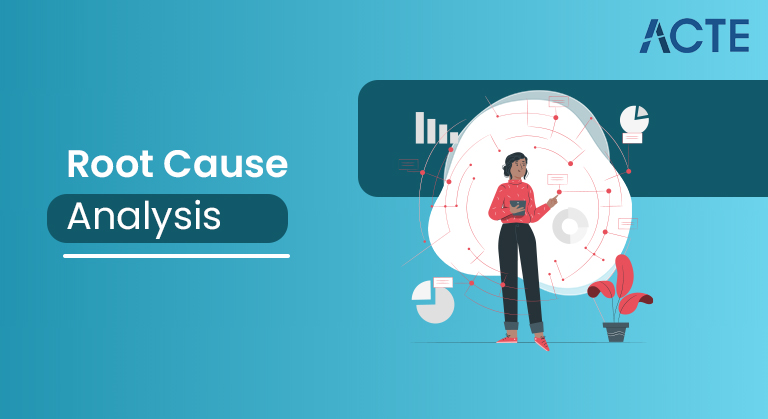
- RCA may be a methodical approach aimed toward finding the causes of close calls and adverse circumstances to work out preventative measures.
- RCA teams look beyond human error to work out system problems that were donated to or resulted within the close shave or adverse event.
- The purpose is to answer what occurred, why did it happen, and what is often done to prevent it from happening again?
- The purpose of performing an RCA is to guard patients by recognizing and changing factors within the healthcare system which will potentially cause harm.
- There are 9 steps (Table 1) that function as a manual for conducting an adequate RCA. Before an RCA can begin, honest and open reporting of errors is required.
- A Department should vigorously encourage residents, midlevel providers, and therefore the capability to document adverse circumstances and shut calls (or near misses). A risk-based triaging system should be utilized to think about the report back to decide if an RCA is required.
- The laboratory aide was cut by a dissection knife.
- The blade was gone the sink.
- The site wasn’t removed on the prior day.
- The pardon isn’t a daily habit.
- Normal operating procedures/documentation for clemency don’t exist.
- Concentrate on repairing and remedying root reasons instead of just signs.
- Don’t forget the importance of dining symptoms for short-term relief.
- Admit there are often, and typically are, numerous root causes.
- Concentrate on HOW and WHY something occurred, not WHO was reliable.
- Be organized and find concrete cause-effect evidence to copy root cause claims.
- Supply enough information to tell a remedial course of action.
- Think about how a root cause is often controlled (or replicated) within the future.
- As the above principles illustrate: once we explore deep problems and causes, it’s important to require an entire and holistic system. additionally, to find the basis cause, we should always strive to deliver context and knowledge which will end in an action or a choice. Remember: good analysis is actionable research.
- The first purpose of root cause analysis is to seek out the basis explanation for a situation or event. The second goal is to completely comprehend the way to fix, indemnify, or learn from any underlying problems within the basis cause. The third goal is to use what we learn from this study to systematically prevent future problems or to repeat victories.
- The study is merely nearly as good as what we do thereupon comment, therefore the third goal of RCA is vital. we will use RCA to also change the core process and system problems in a way that daunts prospective issues. rather than just regaling the symptoms of a football player’s concussion, for instance, root cause analysis might recommend sporting a helmet to scale back the danger of future traumas.
- Machine (equipment, technology)
- Method (process)
- Material (includes staple, consumables, and information)
- Man/mind power (physical or knowledge work)
- Measurement (inspection)
- Mission (purpose, expectation)
- Management / money power (leadership)
- Maintenance
- Product (or service)
- Price
- Promotion (marketing)
- Process (systems)
- People (personnel)
- Physical evidence
- Performance
- Surroundings (place, environment)
- Suppliers
- Skills
- Ask inquiries to clarify details and convey us closer to answers. The more we will drill down and examine every potential cause, the more likely we are to seek out a root cause.
- Once we expect we’ve determined the basis explanation for the matter (and not just another symptom), we will ask even more questions: Why are we confident this is often the basis cause rather than that? How can we fix this root cause to regulate the difficulty from occurring again? Use simple questions like “why?” “how?” and “so what does that mean here?” to chop a path towards learning.
- As we conduct a root cause analysis, it’s essential to remember the procedure itself. Take notes. Ask inquiries about the analysis process itself. determine if a specific technique or approach works best for your specific business requirements and conditions.
Introduction to Root cause analysis:
Delivering quality patient care may be a fundamental tenant of medical and surgical training. Multiple orthopedic programs, including The Patient Safety Committee of the American Academy of Orthopaedic Surgeons (AAOS), are executed to measure the standard of surgical care, also as decrease the incidence of medical mistakes.
Structured Root Cause Analysis (RCA) has become a current area of interest and, if completed entirely, has been shown to lower surgical errors across many subspecialties. there’s a paucity of publications on how the operation of an RCA is often executed. the present review was created to supply a structured process on the way to complete a proper root cause analysis. Utilization of this method could also be useful within the precluding of medical errors.
What is Root cause analysis?
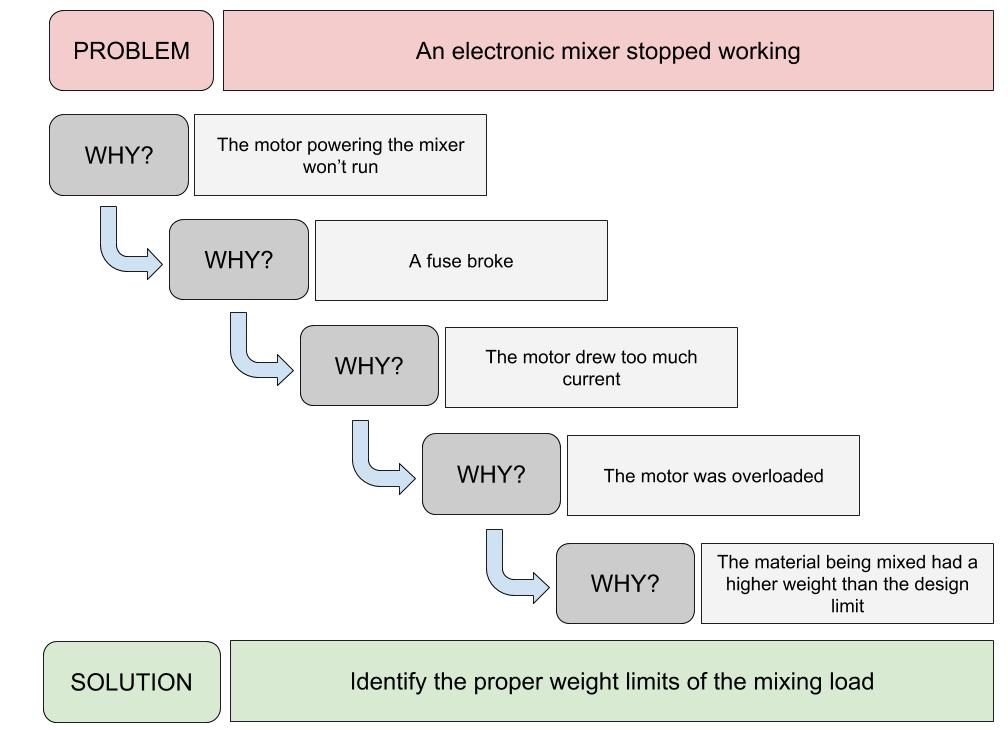
RCA process
Ask why 5 times Technique:
The most straightforward thanks to perform a root cause analysis are to ask why 5 times. within the case above, the solutions might read as follows:
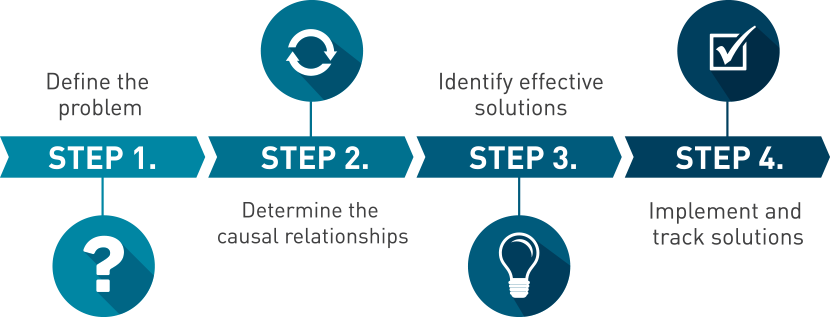
So what’s root cause analysis?
Root cause analysis (RCA) is that the method of finding the basis causes of problems to work out appropriate solutions. RCA believes that it’s far more useful to systematically prevent and solve underlying issues instead of just dining unplanned symptoms and putting out fires.
Root cause analyses are often achieved with a set of principles, techniques, and methods which will all be leveraged to work out the basis causes of an occasion or trend. Looking beyond superficial cause and effect, RCA can show where procedures or systems failed or forced a problem within the first class.
Core principles:
There are rare core principles that guide useful root cause analysis, several of which should already be apparent. Not only will these enable the research quality, but these also will enable the analyst to realize trust and buy-in from stakeholders, clients, or patients.
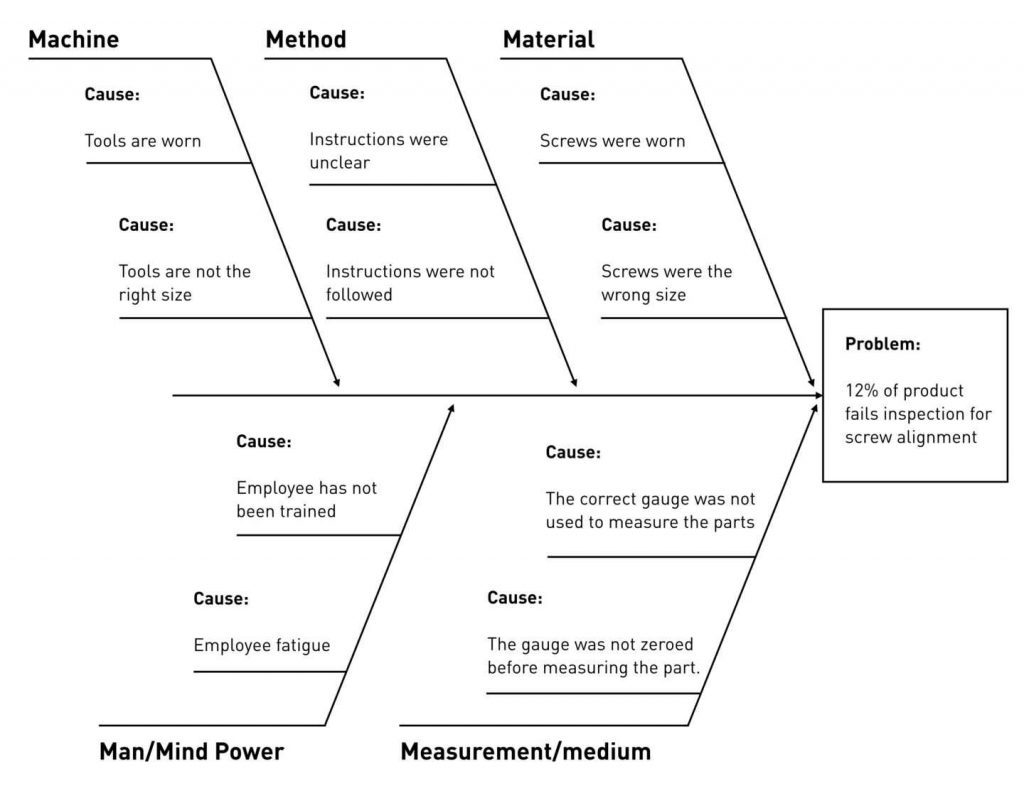
Goals and benefits:
Cause and effect Fishbone diagram:
Another common method is making a Fishbone diagram, also called an Ishikawa diagram, to visually map cause and effect. this will assist identify potential causes for a drag by enabling us to follow unconditional branched paths to possible causes until we find ourselves at the proper one. It’s like the 5 Whys but far more visual. For the sake of clarity, carefully consider the classes before making a diagram. Common categories to think about during a Fishbone diagram:
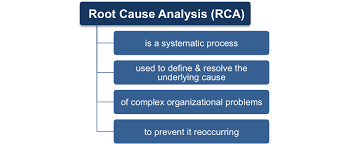
Tips for performing effective root cause analysis:
Work with a team and obtain fresh eyes
Whether it’s just a half or an entire team of colleagues, any extra eyes will allow us to collect out solutions quickly and also act as a check against bias. Obtaining input from others also will offer different points of view, helping us to question our beliefs.
Plan for future root cause analysis:
Remember to perform root cause analysis for successes too:
Root cause analysis may be a fantastic tool for gathering out where something went wrong. We normally use RCA as how to diagnose issues but it is often equally nearly as good to seek out the basis explanation for victory. If we discover the explanation for success or overachievement or an earlier deadline, it’s seldom a nasty concept to seek out out the basic explanation for why things are going well. this type of study can assist prioritize and preemptively protecting key elements so that we could be ready to solve success in one area of the corporate to success in another area.
Tracing a drag to Its Origins
RCA believes that systems and circumstances are interrelated. An action in one area starts an action in another, and another, and so on. By tracing back these actions, you’ll find where the matter began and the way it grew into the symptom you’re now facing.
Physical causes – Tangible, content items died in how (for example, a car’s brakes stopped working).
Human causes – Individuals did something wrong, or didn’t do something that was required. Human reasons generally cause physical causes (for example, nobody served the brake fluid, which led to the brakes failing).
Organizational causes – away, procedure, or approach that folks use to make conclusions or do their work is wrong (for example, nobody person stood liable for vehicle maintenance, and everybody thought somebody else had filled the brake fluid).
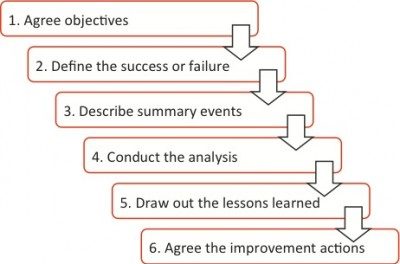
Conclusion
Elimination of medical mistakes and advancement of patient protection through quality advancement programs persists to be an evolving place of interest. Payment methods and national schedules are designed to supply quality healthcare. However, the orthopedic books are sparse on the way to develop and execute quality improvement programs. Our model shows the event and execution of quality improvement initiatives to decrease surgical mistakes.





